You want to improve spinning reel performance on your fishing trips in order to spend more time catching fish and less time fussing with tackle. Spinning reels that are not properly maintained tend to produce more wind knots, cast shorter distances and have a shorter service-life.
At the marina, on YouTube and abroad I see a lot of poorly-spooled spinning reels on people's boats. If they got that all-important detail wrong, then what else are they getting wrong? Probably a lot.
So, let's get you squared away with this guide to getting the most out of your spinning reel then take a final look at what really matters the most on your fishing trips.
Tips To Increase Spinning Reel Performance & Look Like You Know What You're Doing
First and foremost, you want to make sure you have paired your spinning reel with the correct rod. Is your spinning reel mounted on a spinning rod? I know this is obvious and a very basic thing, but I see it regularly enough that it's worth mentioning here.
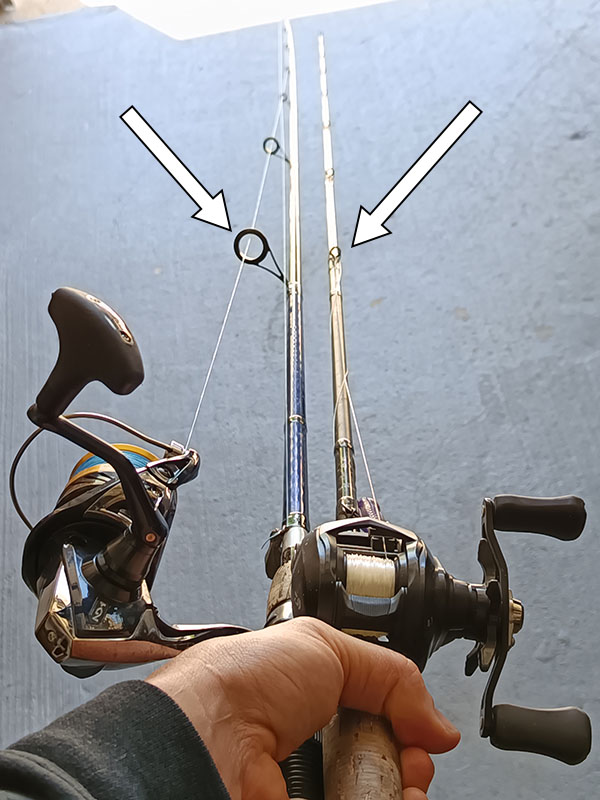
Here you can clearly see the difference between the line guides on casting vs spinning tackle.
Casting rods aren't meant to handle fishing line stripping off a spinning reel because the bottom-most guide is too small to feed the outgoing line on a cast. You will end up with more wind knots, tangles and overall shorter casting distance.
So do yourself a favor and get a good spinning rod, like what I recommend in this guide to my favorite spinning combo.
Fill Your Spool All The Way
The second thing you want to do is ensure that your spool is full. While the pairing of casting/spinning tackle is a less-than-common goober move, you really don't have to look far to find spinning reels that are only half-way full.
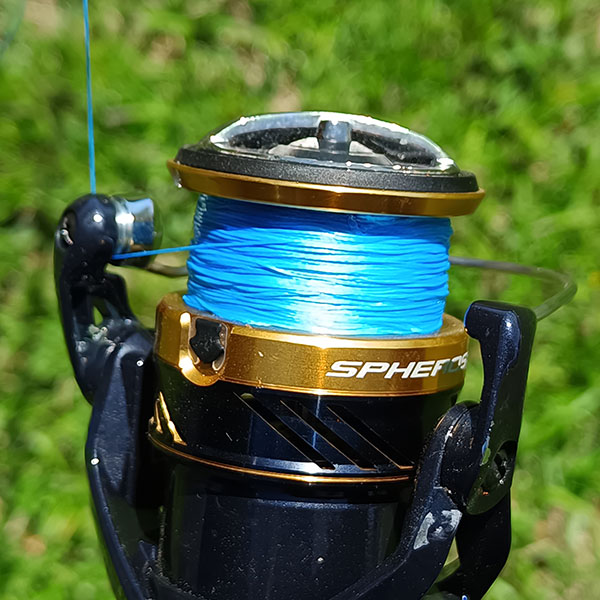
This spool at first appears to be okay, but it's actually not completely full.
Doing so results in decreased casting performance, not to mention the reel also winds slower because the spool diameter is significantly reduced.
When you spool your reel, fill it to the brim! If you don't, then outgoing line will rub against the edge of the spool, creating friction and shortening your cast. A shorter cast means you cover less water, covering less water results in catching fewer fish. It's that simple!
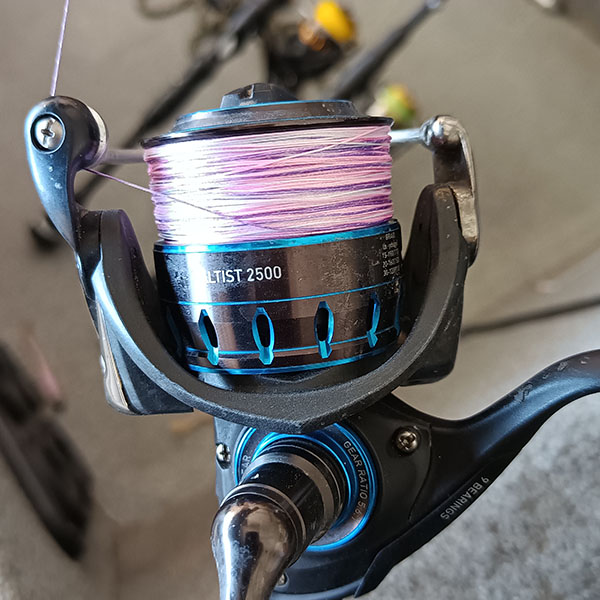
Compare this full spool to the above half full spool. See the difference?
Remove Twist From Your Fishing Line
Third, you want to remove twist from your fishing line. This guide here provides methods to that end.
The reason you don't want twist is that it causes line to fold upon itself, tangle and create dreaded wind knots when casting. You can spend time picking out wind knots or you can spend time catching fish.
After that, you want to regularly de-twist your fishing line every couple months, or whenever you see fit. I like to do a boat-drag at the end of the fishing trip so it's done before I get back to the dock and become tempted to rush home instead of taking care of my tackle.
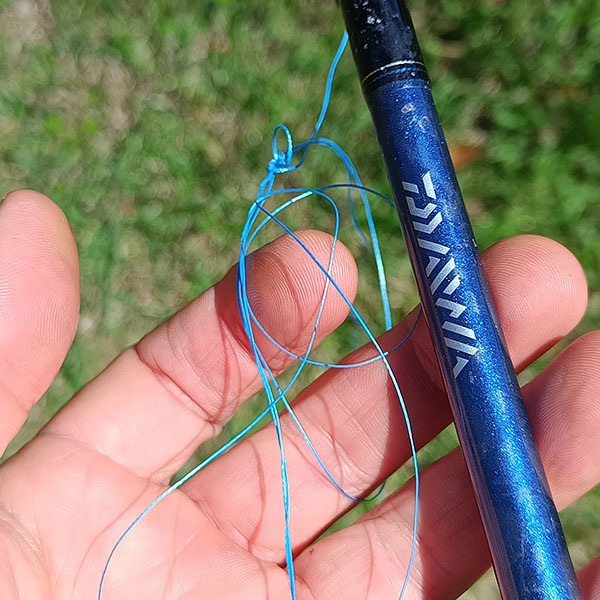
Twisted line = wind knots
Don't Secure Hooks on The Line Guide Insert
Doing so is a great way to scratch the insert — a sensitive component of your spinning combo — which will in turn scratch and fray line on each cast. At that point the line guide just needs to be replaced. Local tackle stores like Gus's Tackle in Slidell can do this. But the very best thing to do is avoid this inconvenience in the first place by using the provided hook keeper or securing the hook to the frame.
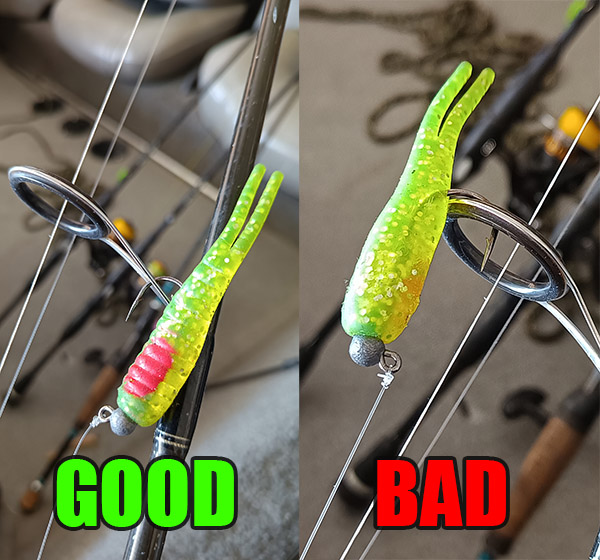
Avoid "Ghost Drag": Use Mono Backer
Ghost drag results from braided fishing line that isn't properly secured to the spool. This happens when budding inshore anglers tie their main line directly to the spool without an additional way to secure it. With time, the braid becomes loose and circles the spool on the retrieve. A fish can even strip line off the spool without activating the drag, no matter how much you reel against it! This leaves you with grabbing the braid to stop the fish, which is a great way to cut your hand.
The best solution — from years of experience fishing across Louisiana's coast — is to use a mono backer. Specifically, 12lb test monofilament secured to the spool using an Arbor Knot, then secured to the braided main line using a Uni to Uni Knot. That's what I recommend, you can use whatever you like, just don't get sucked into the black hole of knot nerdery. It's just unnecessary.
Wind it around the spool at least a few times to get a good grip on the spool. Mono stretches and grips, whereas braid does not. Plus it's cheap to use and saves you money by reducing the amount of braid needed to fill the spool. No, you don't need 200 yards of braid to catch fish, not even large bull reds!
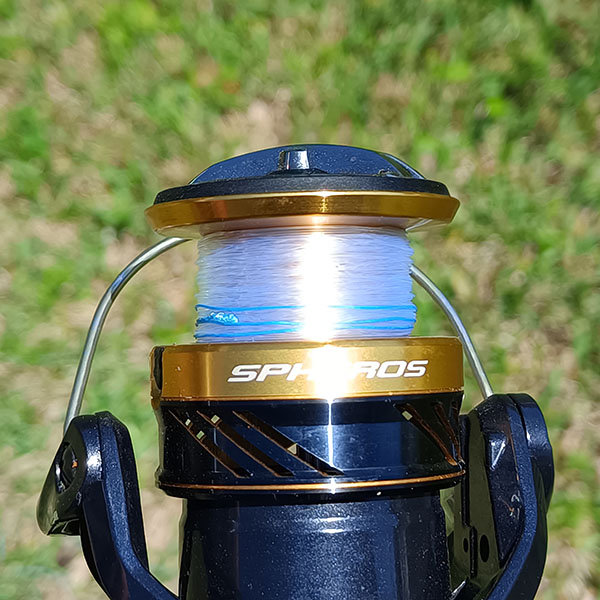
Here I went a little extra on the mono backer so I could completely fill the spool with usable braided line.
Don't Reel Against Drag
It's not a winch, it's a reel! The proper way to fight fish is to pull back on them with the rod, then drop it down and forward, introducing slack and, as you do, reel that slack in.
Novices tend to reel against the fish, even when it makes a run that peels off drag. This is a great way to prematurely wear out the reel and introduce line twist into the spool.
Close The Bail With Your Hand
Novices also tend to close the bail by turning the reel handle. This is a mistake that can introduce line twist into your spool and is unnecessarily tough on your spinning reel.
A simple way to improve spinning reel performance is to close the bail with your off-hand after a cast is complete.
Freshwater Rinse + Lube
Never, not ever, should you use a pressure washer to clean off your reels. The best way to maintain them is to give them a freshwater rinse after each fishing trip, especially if you've been to saltier destinations like Grand Isle.
After that, most spinning reels feature some kind of lubrication port you can unscrew and put a few drops of reel oil in. If this is outside your mechanical inclination, then I strongly suggest bringing your reels in to a local tackle store like Gus's Tackle in Slidell in order to get them serviced. I usually do this during the two times of year fishing is slowest: February and August.
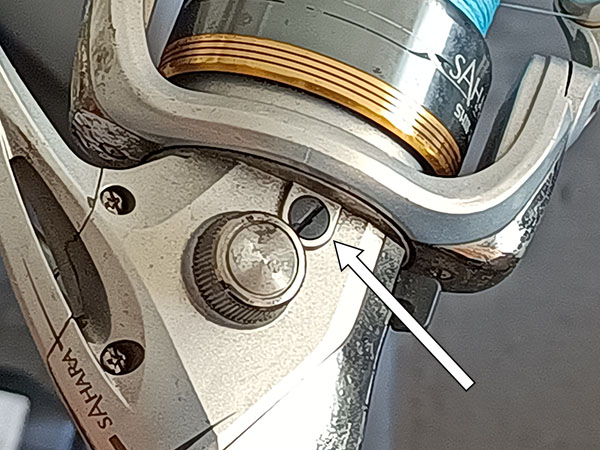
Most spinning reels have some way to lubricate them.
That's just a handful of tips and advice...
If you've got more then please use the comments section below. It's great to see like-minded anglers pitch in with their own tips and tricks!
But there's more to catching fish than merely managing to improve spinning reel performance!
You could have a poorly spooled spinning reel with tons of line twist and still manage to put together impressive boxes of fish like what you see below.
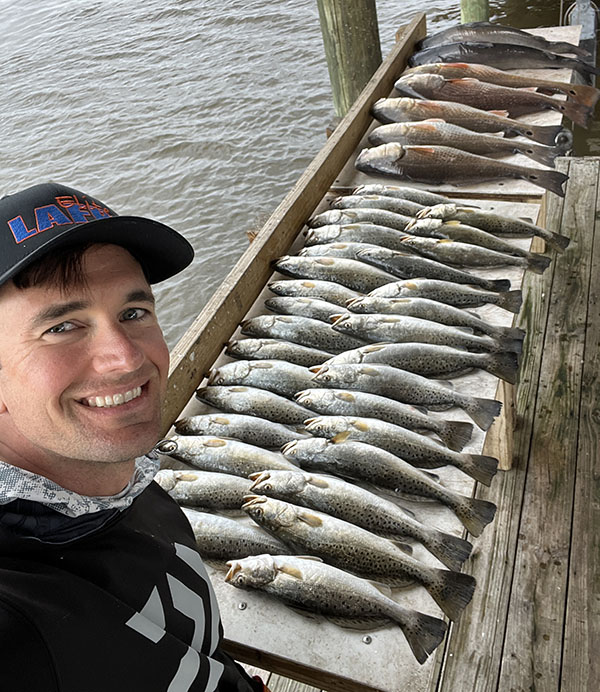
My buddy and I caught a limit of trout and some redfish using what I teach inside Inshore Fishing 101. Let me show you how!
That's because the #1 thing you can do on your fishing trip is find biting fish in the first place. If you can consistently do that then you would have truly mastered the inshore fishing game. While correctly spooling your tackle is a given, finding good fishing spots is what most anglers struggle to accomplish, despite giving it their best effort.
What can they do different? What's a step-by-step process they can follow to achieve long-term success and catch fish when everyone else is left scratching their heads?
That's what I teach inside Inshore Fishing 101 and LAFB Elite.
Barry Magee
LAFB Elite is well worth it!
Inside my membership I teach you how to judge the conditions, identify the best fishing spots based upon them and — last, but not least — how to safely navigate to those locations and back to the dock. The absolute worst thing you can do on Louisiana's coast is decide to "wing it" and end up with a damaged boat or worse.
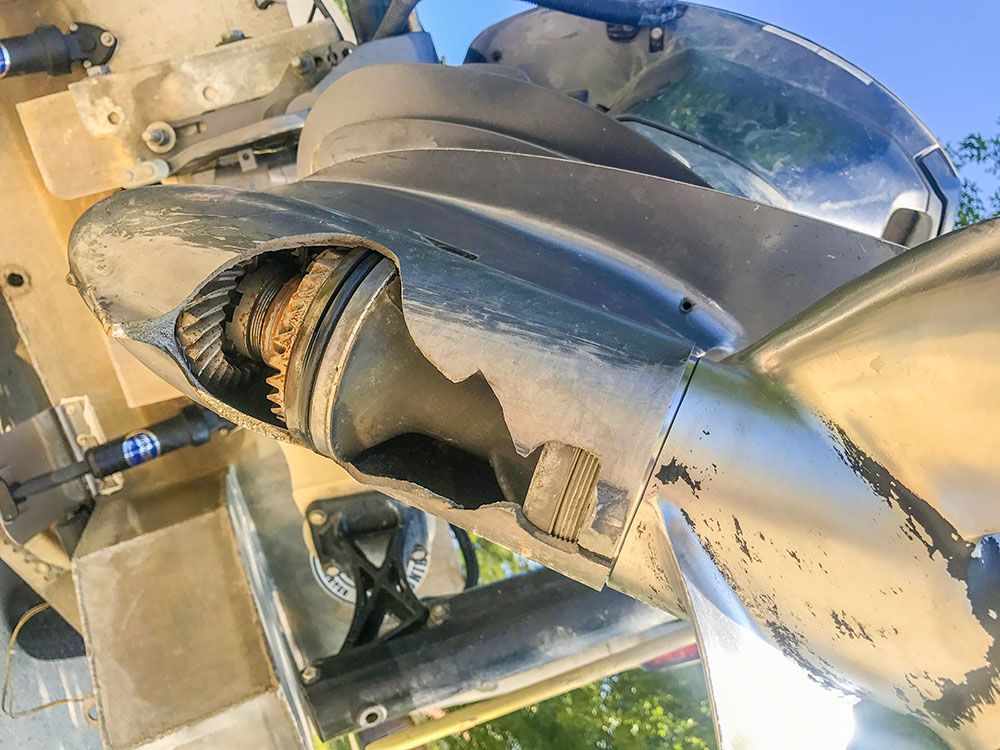
Let me teach you what I learned the hard way so you don't have to!
You can improve spinning reel performance, and that will help, but it won't ultimately allow you to catch fish in the more challenging fishing spots, such as deep water with swift current. Inside the "Executing Your Fishing Trip" section of Inshore Fishing 101 you will learn how to position your boat according to the wind and select the correct sinking weight to do what matters most: getting good presentations on fish and avoiding bad ones, like what you see below.
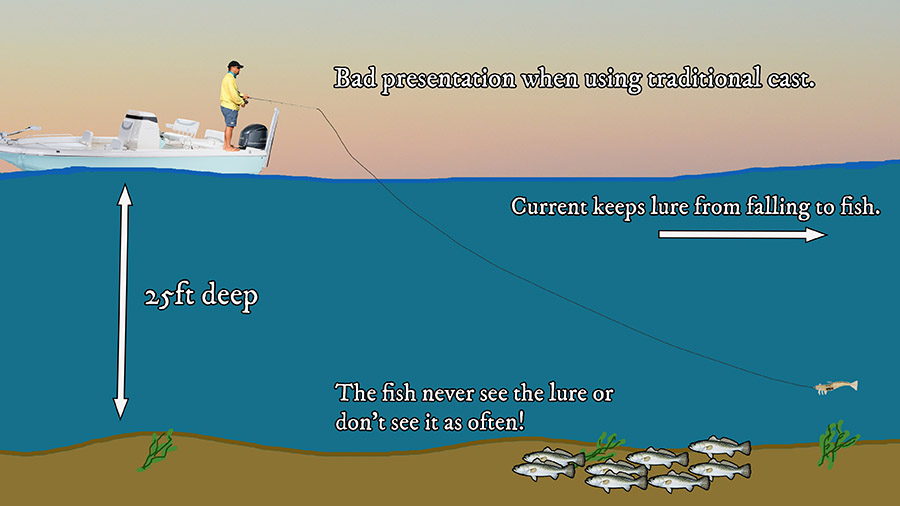
Improving spinning reel performance is just a small piece of the puzzle. Get the rest all in one spot when you enroll in Inshore Fishing 101.
I too was frustrated with the many times I went and fished all day only to come home with little to nothing.
I have been an Elite member now for a couple of months, and while I haven't loaded the boat yet, I can say that I have learned a lot.
Some of the stuff that Devin teaches, I think that I already was doing but not understanding why. Plus I learned the things that "I didn't know that I did not know".
I am very pleased with LAFB Elite, and recommend it to anyone who's on the fence considering if they should join or not.
Like Devin says: it costs less that a bucket of live shrimp, so what do you have to lose?
Dannie Spivey - South Carolina Angler
Yep, Inshore Fishing 101 is the best investment I’ve ever made in catching fish. (Keyword CATCHING)
I was an early member. I think if for some reason I lost my membership that I would buy another one!
I have been unsuccessful at finding anything like Inshore Fishing 101 anywhere else.
Thanks, Devin!
